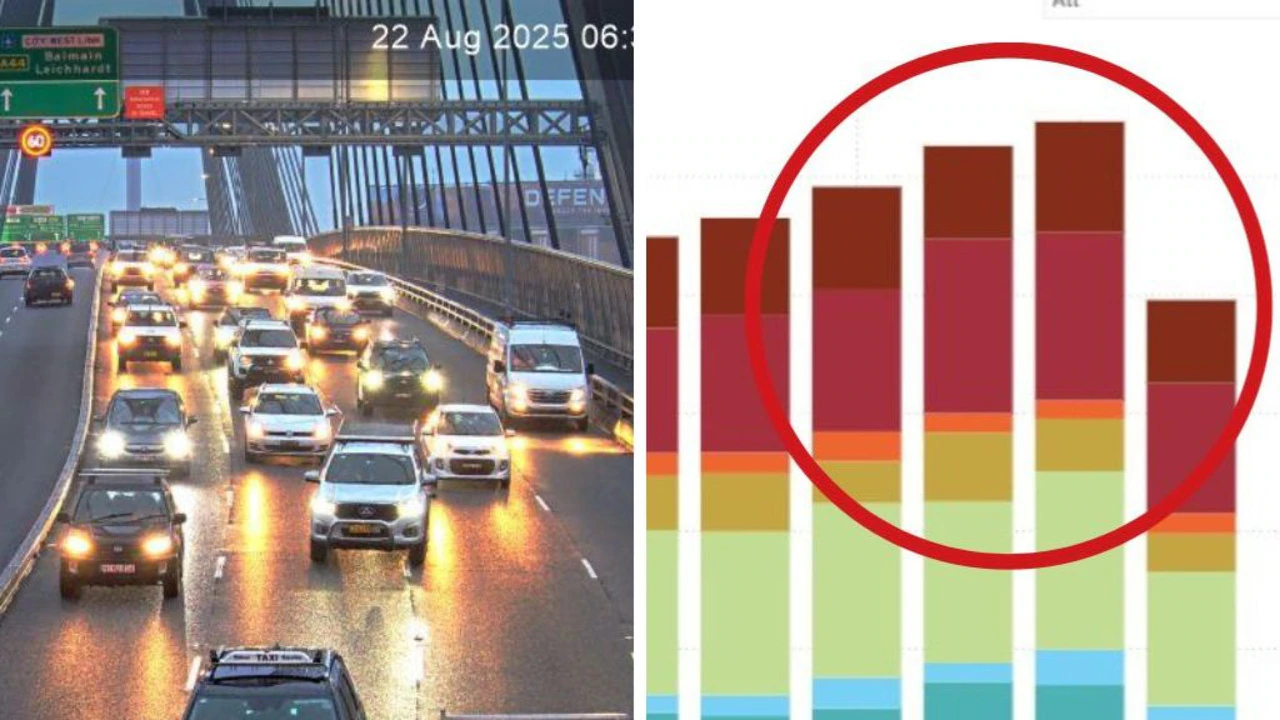Copyright news

It’s a stark illustration of how Advanced Driver-Assistance Systems (ADAS) such as wheel-tugging lane-keeping assist and beeping driver monitors are proving intrusive hinderances, rather than the beneficial lifesavers they ought to be. The survey conducted by Insurance Australia Group (IAG) revealed more than a third of Aussie drivers found ADAS features distracting, and sometimes made driving more difficult or dangerous. Alarmingly, from the 2000 drivers who responded, more than two in five (43 per cent) said ADAS had negatively impacted their driving. Disabling these systems could be seen as putting lives in danger, but to frustrated drivers, poorly calibrated or overly annoying ADAS is in itself the danger. The shocking statistics will come as no surprise to Australians mystified by systems that feel more Big Brother than trusted companion. With such advanced camera, radar and LiDAR-based technology in most modern cars, crashes and the road toll should be plunging. WORST ROAD TOLL IN OVER A DECADE Yet 2024 saw Australia’s highest road toll since 2012, with 1300 lives lost. And things are even worse this year, according to the Australian Government’s own road safety data hub. According to the latest figures available through the 12 months ending September 2025, the road fatality rate is 5.2 per cent higher than over the same time last year. There were 990 deaths on Australian roads this year through to the end of September, according to the data/ The survey conducted by IAG, Australia and New Zealand’s largest general insurance company, with brands such as NRMA Insurance and RACV, previews a year-long study on ADAS by partnering with Queensland University of Technology (QUT) and iMOVE, Australia’s national centre for transport and mobility research and development. Beginning in January next year, the field study of 60 drivers at a testing facility seeks to learn how Aussie drivers interact with ADAS, and how we can better realise its life-saving potential. The first nut to crack will be why 60 per cent of drivers switch off systems designed to help and protect them. MORE: ‘F***ing stupid’ car tech backdown “ADAS has got to be a good coach and not an annoying schoolmaster,” said IAG Research Centre Head Shawn Ticehurst. “Not all (ADAS) systems are equal, but I’m really pleased to see a lot of car companies are now saying they’ve got to calibrate their ADAS for Australian roads.” This has been a regular complaint of new car owners and motoring journalists alike. It feels like many assist systems have been added for box-ticking or to meet ANCAP safety protocols, without enough time spent on ensuring they function effectively on our varied roads. WORST ‘OVER-NANNYING’ OFFENDERS As a motoring writer who drives hundreds of new cars each year, the worst over-nannying ADAS offenders include models from Subaru, Mitsubishi, Hyundai and Kia. But most hair-pulling is from new Chinese players such as GWM, Deepal, Leapmotor and Chery … in some instances, I’ve had to stop driving and turn off every system to preserve my sanity. MORE: World-class motor tech designed by Australians But as many owners know, most ADAS defaults to “on” again with each new journey. Many drivers disable some or all ADAS systems as part of the start process, as second nature as putting on a seatbelt. But turning off systems that could and should prevent accidents must be putting lives at risk. “People are frustrated,” Ticehurst said. “But we really want to understand, are there some things about driving skill that perhaps needs to change too?” IS THE DRIVER AT FAULT? And here’s the rub. While we may find ADAS annoying, is it merely pointing out that our driving skills, concentration and road rule following aren’t up to scratch? “Is lane departure warning just pointing out a time when the driver hasn’t put on an indicator?” said Ticehurst. “Maybe there’s some education around that, so we really want to do this practical research.” It’s much needed. The IAG survey showed 70 per cent of drivers would welcome more information on how to best use ADAS, and half the responders said their ADAS learnings came only from trial-and-error. Speaking of errors, the study must also investigate the efficacy of ADAS, and if Aussies are disabling it due to the technology stuffing up. The survey revealed the ADAS considered most helpful were blind spot warning and forward collision warning; least useful were driver monitoring/fatigue protection, road sign recognition, and lane keep assist. MORE: Car giant ditches ‘nightmare’ Aus driving tech Some systems scold if you briefly take your eyes off the road to operate the infotainment (or, ironically, to disable the driver monitor), while speed sign recognition can be notoriously unreliable, bonging at the driver as it incorrectly believes you’re speeding. “Manufacturers are explicit that these systems can make errors and therefore require drivers to remain engaged,” said Professor in Intelligent Transportation Systems at QUT, Sebastien Glaser. “Alerts can confuse people, and repeated warnings or steering interventions can lead to annoyance and distrust. “Manufacturers face a difficult balance: should a system overreact and sometimes brake unnecessarily, or risk not braking when it’s most needed?” Other aspects to be studied include how ADAS ages – is it affected by weather and wear-and-tear? – and crash claims analysis, such as the cost of repairing and recalibrating ADAS in damaged cars. IAG also wants to find how it can craft the right ADAS education for drivers, such as informing them that some systems offer sensitivity levels to suit a driver’s preference. Those running the study said the overarching goal was to help play a role in reducing accidents through improving ADAS and the way drivers use it. Understanding why 60 per cent switch systems off must be the primary focus. Clearly, an insurance company wants fewer accidents to reduce payouts for repairs or replacement cars, but it’s in everybody’s interests for ADAS to reach its full potential and help reduce our scandalous road toll. “Our research project findings will provide evidence for regulators to make informed decisions about ADAS, driver training, and behaviour change,” said Glaser. For those driving ADAS-enabled cars each day, having these systems working with us rather than against us is an imperative. And as my test car beeps, bongs, flashes and tugs the wheel on my drive home, smart research and improvements can’t come quickly enough.



